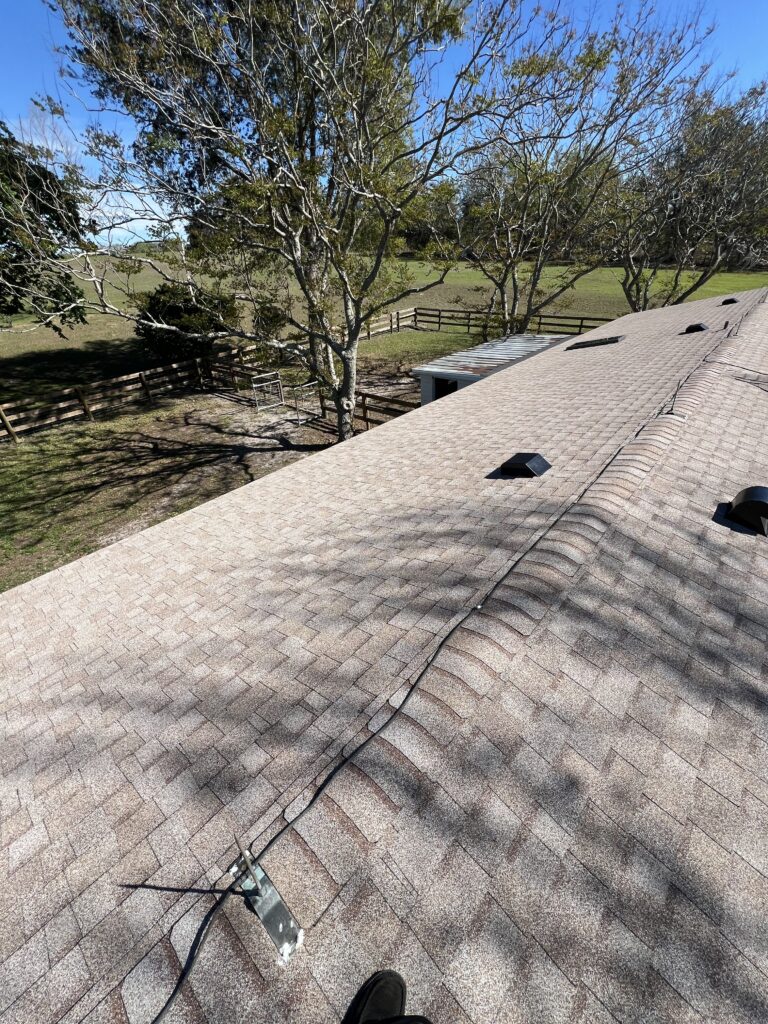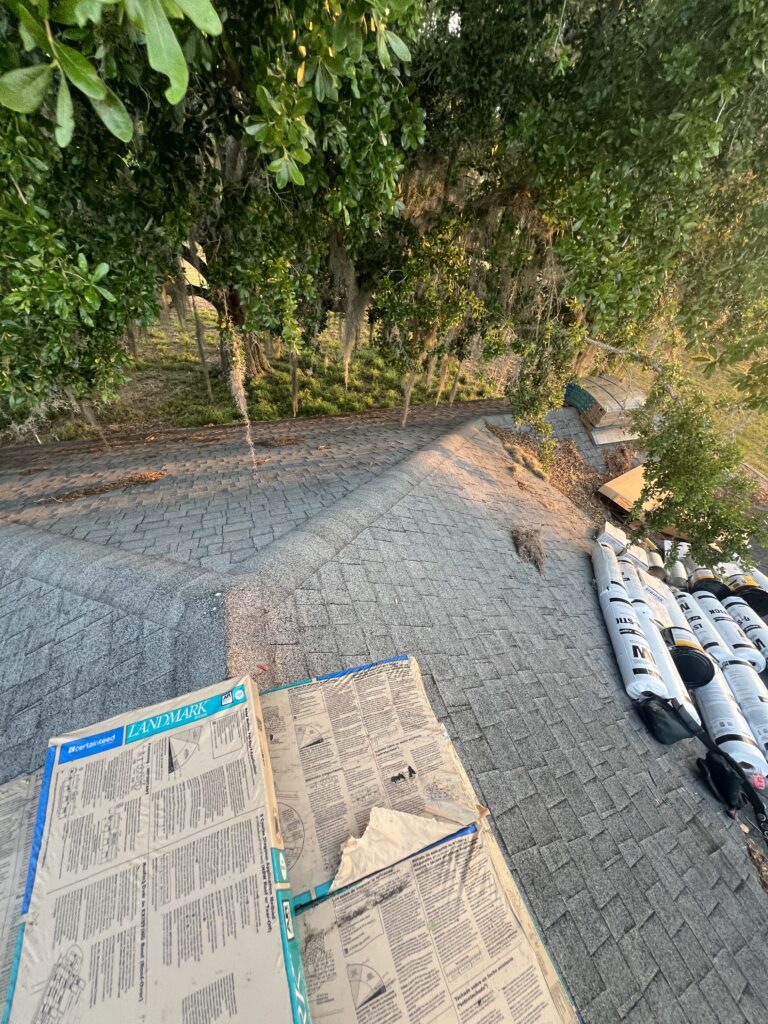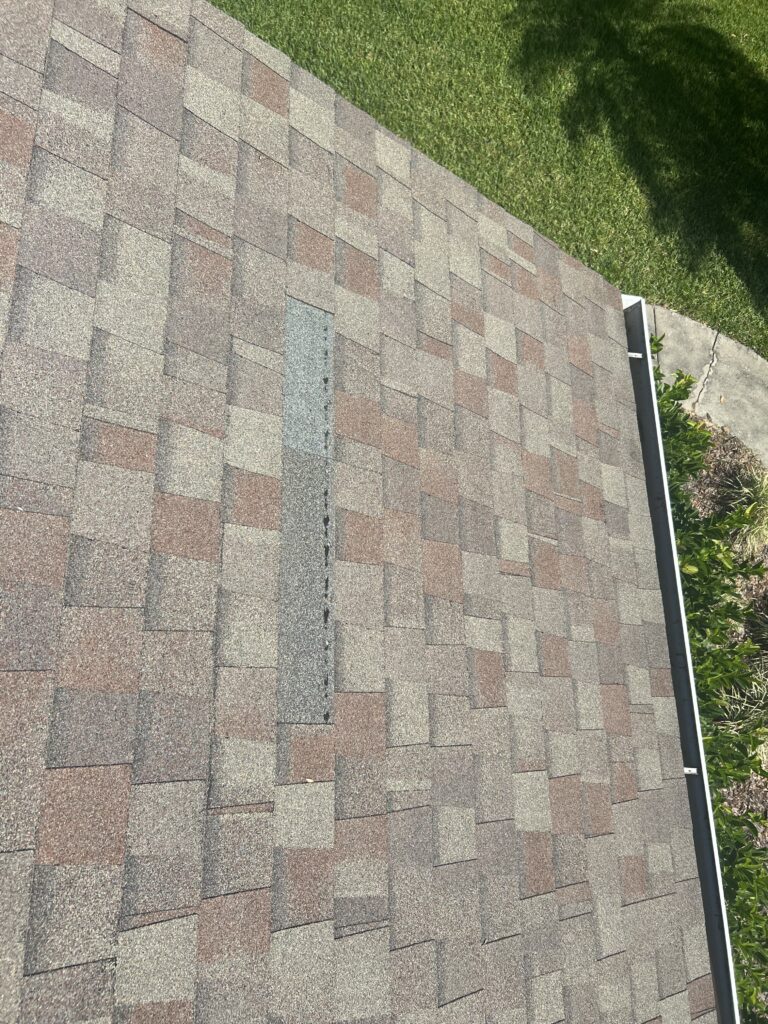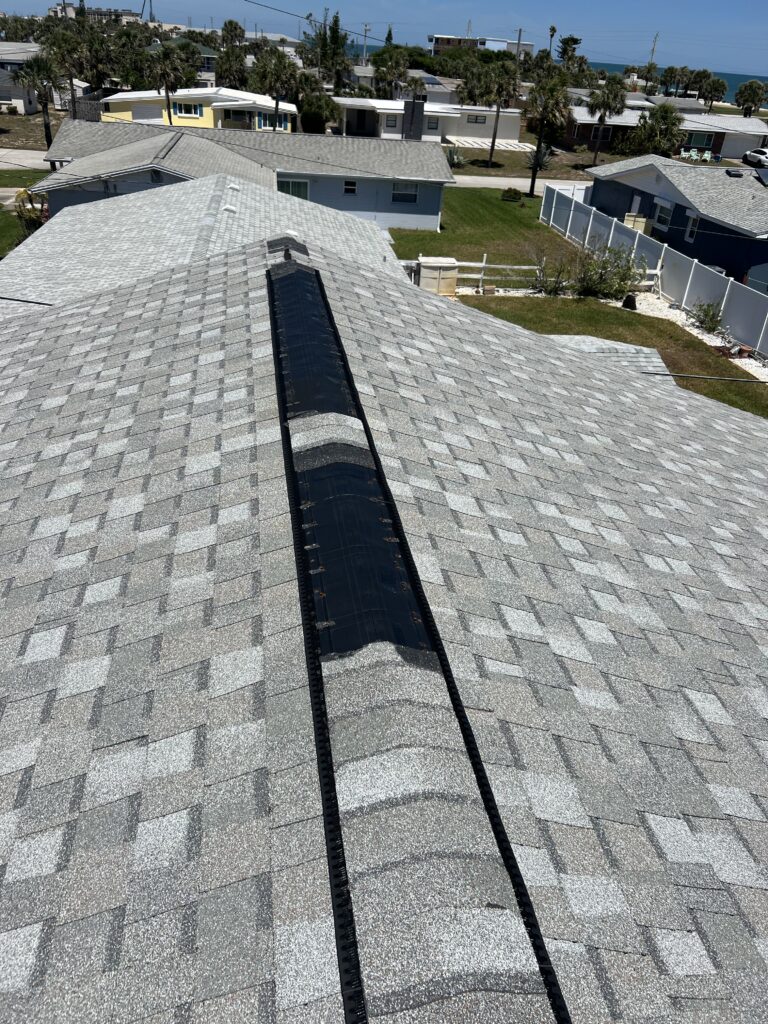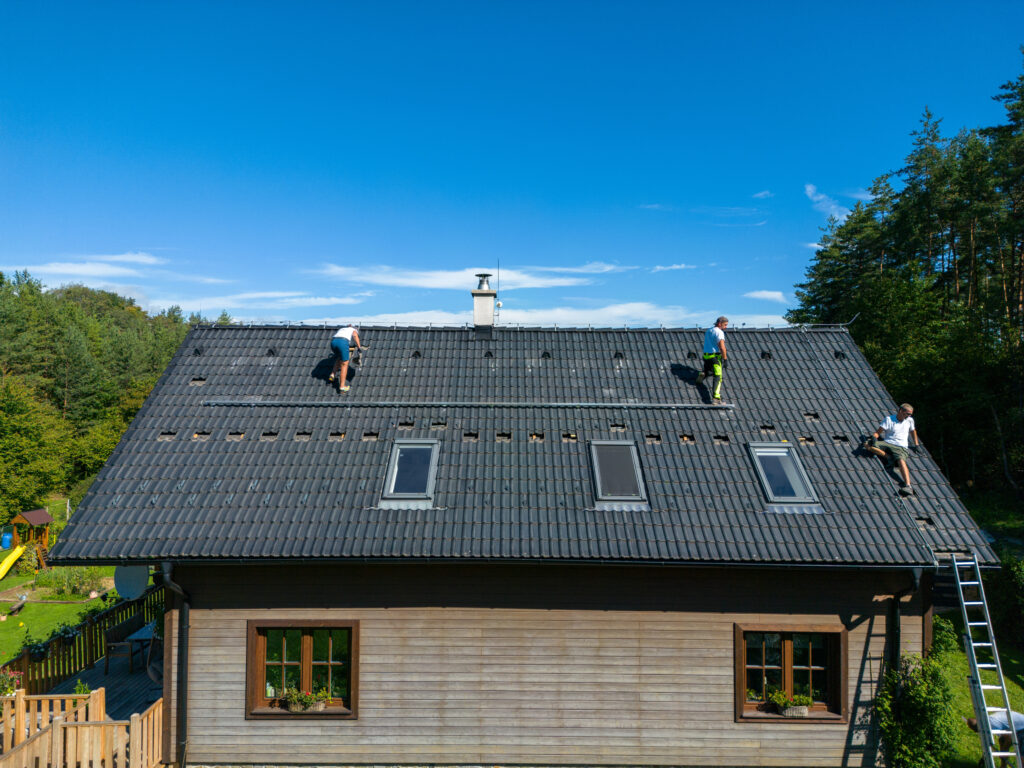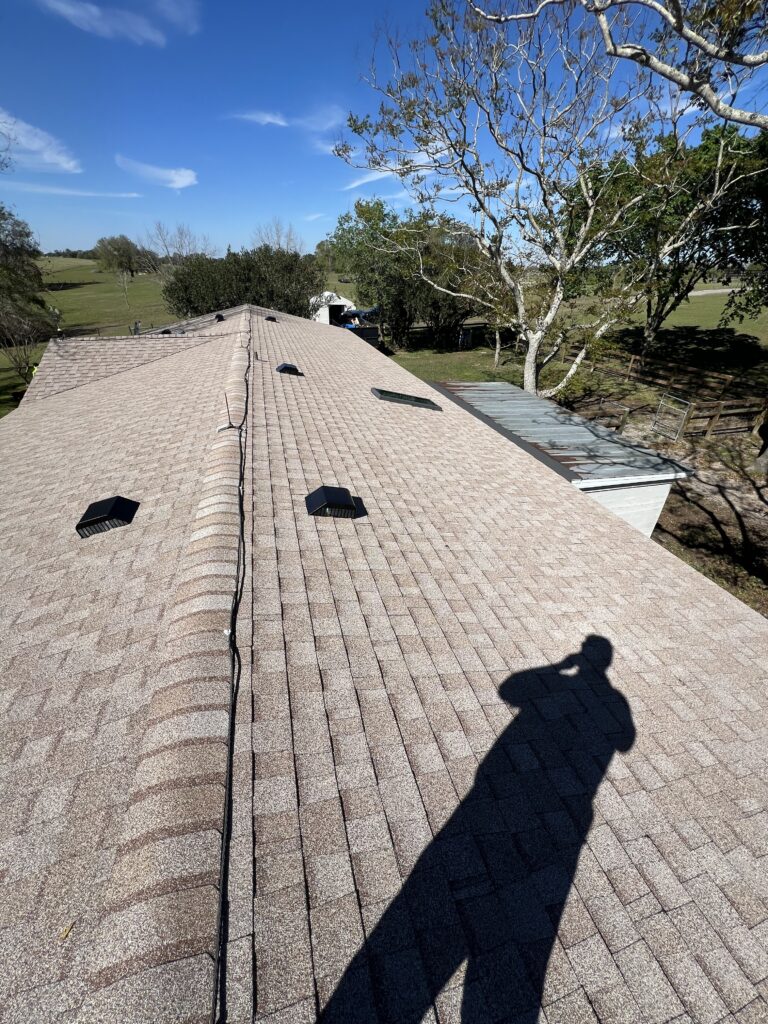How Long Does a Florida Roof Really Last?
A new roof is one of the most significant and essential investments you will ever make in your home. It is the primary shield that protects your family, your belongings, and your home’s structural integrity from the elements. When you see a manufacturer’s warranty promising 30, 40, or even 50 years of life, it is easy to feel a sense of security. However, for a homeowner in Clermont, it is critical to understand that a roof in Florida does not live the same life as a roof in a milder, more forgiving part of the country.
Our state’s unique and often punishing climate puts roofing materials under a relentless assault from intense sun, torrential rains, high humidity, and the ever-present threat of hurricane-force winds. This is why the question of a roof’s true lifespan is so important. The answer is not a single number printed on a product wrapper, but a complex equation that depends heavily on the specific material you choose, the quality of the initial installation, and the consistency of its maintenance over the years. Understanding how our local environment impacts your roof is the first step toward making a smart, long-term investment in your home’s protection.
Factors That Shorten a Roof’s Lifespan
Before comparing specific roofing materials, it is important to appreciate the unique set of challenges that every Florida roof faces from the moment it is installed. These environmental factors are the primary reason that the real-world lifespan of a roof here can be significantly shorter than the advertised warranty.
First and foremost is the intense, year-round ultraviolet (UV) radiation from the sun. The constant solar exposure beats down on roofing materials, causing the essential oils in asphalt shingles to dry out and evaporate. This leads to them becoming brittle, prone to cracking, and losing their flexibility. This constant UV bombardment also causes colors to fade and materials to degrade at an accelerated rate.
Next is the extreme moisture. The high humidity and frequent, torrential downpours create a perfect environment for the growth of algae, which causes the ugly black streaks you see on many roofs, and lichen or moss, which can lift the edges of shingles and trap moisture. Driving rain, especially during our severe summer thunderstorms and tropical systems, relentlessly tests every seal, seam, and point of flashing, seeking out any tiny weakness to exploit.
Finally, and most critically, are the high winds. It is not just the catastrophic threat of a major hurricane that takes a toll on a roof. The consistent high winds from severe thunderstorms and the outer bands of tropical systems are constantly working to lift and curl shingles, break tiles, and tear at the roof’s edges and ridge caps. This cumulative wind damage weakens the roof over time, making it more vulnerable with each passing storm season.
Asphalt Shingles: The Popular Choice
Asphalt shingles are, by a wide margin, the most common roofing material found on homes in Clermont and across Florida. Their popularity is driven by their affordability, versatility, and the wide range of available styles and colors. However, not all asphalt shingles are created equal, and their performance in our climate varies dramatically.
The most basic option is the traditional 3-tab shingle. These are single-layer shingles that are lightweight and the most affordable choice upfront. While they may come with a manufacturer’s warranty of 20 to 25 years, their realistic lifespan in the harsh Florida sun and wind is closer to 10 to 15 years, and sometimes even less. Their flat, single-layer design makes them more susceptible to being lifted and torn off by high winds, and their thinner profile means they degrade more quickly under the intense UV exposure.
A far superior choice for any Florida home is the architectural or dimensional shingle. These have become the new standard for a reason. They are constructed with multiple, laminated layers of asphalt and fiberglass, making them significantly thicker, heavier, and more durable than 3-tab shingles. Their robust design gives them a much higher wind resistance rating, and their thickness provides better protection against the sun’s rays. While they come with warranties of 30, 50, or even “lifetime,” a realistic expectation for their service life in our climate is 20 to 25 years, and sometimes longer with proper maintenance. The added durability and longevity make them a much more resilient and cost-effective choice in the long run.
Ready for your new asphalt roofing? Click here to learn more!
Metal Roofing: The Durable Contender
In recent years, metal roofing has surged in popularity among Florida homeowners looking for a premium, long-term solution. While the upfront cost is higher than asphalt shingles, a metal roof offers a suite of benefits that make it uniquely suited to withstand the challenges of our climate, often making it a more cost-effective investment over the life of the home.
The primary advantage of a metal roof is its exceptional durability and wind resistance. Standing-seam metal roof systems are engineered with interlocking panels and concealed fasteners that can withstand hurricane-force winds, often rated for 140 miles per hour or more. This provides an incredible level of protection and peace of mind during a severe storm. Metal is also completely resistant to fire, rot, and insect damage.
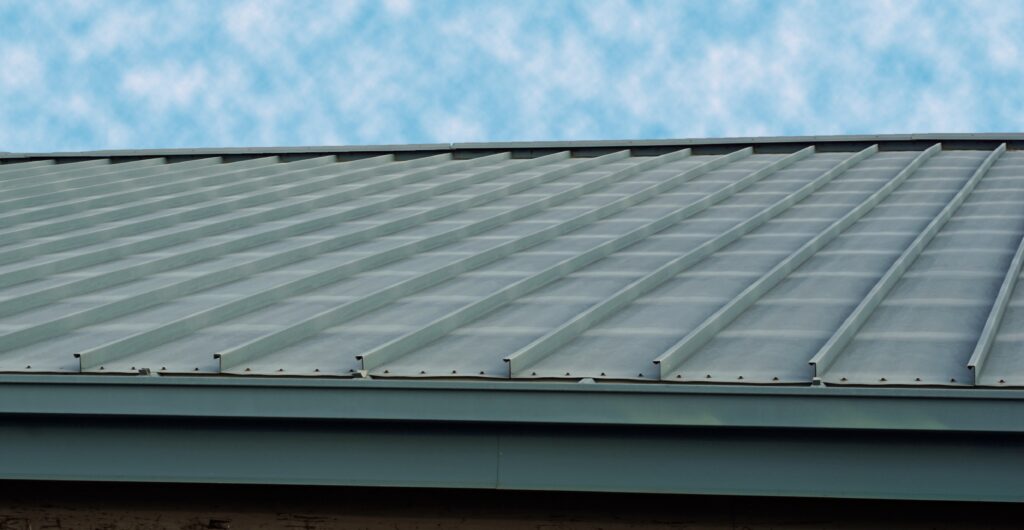
Another significant benefit is energy efficiency. Metal roofs are highly reflective of solar radiant heat. By reflecting the sun’s harsh rays away from your home, a metal roof can significantly reduce the load on your air conditioning system, leading to substantial savings on your cooling costs during our long and brutal summers. The realistic lifespan for a properly installed metal roof is 40 to 70 years or more, meaning it is truly a “once in a lifetime” roofing solution for many homeowners.
Interested in having metal roofing installed? Click here to learn more!
Tile Roofing: The Classic Florida Look
For many, the classic and elegant look of a tile roof is the definitive architectural style of Florida. Whether made from clay or concrete, tile roofs are known for their beauty and their incredible longevity, but they have their own unique set of considerations in our environment.
Both concrete and clay tiles offer exceptional durability. They are completely impervious to fire and rot and can easily last for 50 years or more, with some clay tile roofs known to last for over a century. However, their primary vulnerability is to impact damage. While very strong, individual tiles can be cracked or shattered by severe hail or by flying debris during a hurricane.
A critical and often misunderstood component of a tile roof is the underlayment. This is the layer of material, typically felt or a synthetic membrane, that is installed underneath the tiles and serves as the roof’s true waterproof barrier. The underlayment has a shorter lifespan than the tiles themselves, usually around 20 to 30 years. Often, when a tile roof begins to leak, it is the underlayment that has failed, not the tiles. A “tile roof replacement” can sometimes involve carefully removing the existing tiles, replacing the underlayment, and then reinstalling the original tiles, which is a complex job that requires expert skill.
Considering tile roofing? Click here to learn more!
The Two Most Important Factors: Installation Quality and Maintenance
Regardless of which material you choose, its ability to reach its maximum potential lifespan is ultimately determined by two crucial factors: the quality of the initial installation and the consistency of its maintenance.
Even the most expensive, highest-rated roofing material will fail prematurely if it is installed incorrectly. A high-quality installation is a meticulous process that involves far more than just laying down shingles or tiles. It requires expert attention to detail, including using the correct nailing pattern to ensure maximum wind resistance, properly installing flashing in valleys and around chimneys and vents, and ensuring a securely sealed perimeter. This is why choosing a licensed, insured, and experienced local contractor like Clermont Roofing Inc. is the most important decision you will make in the entire process.
Furthermore, a roof is not a “set it and forget it” component of your home. Proactive maintenance is essential for longevity. An annual professional roof inspection, especially after a major storm, can identify small problems before they become major disasters. Finding and fixing a single loose shingle, a cracked pipe boot, or a small section of lifted flashing is a minor, inexpensive repair that can prevent a catastrophic and costly interior leak down the road.
When you invest in a new roof for your home in Clermont, it is essential to have a realistic understanding of its expected service life in our demanding climate. While manufacturer warranties provide a baseline, they do not always reflect the real-world impact of Florida’s sun, rain, and wind. An entry-level shingle may only last a decade, while a premium metal or tile roof can protect your home for a lifetime.
The most reliable path to maximizing your roof’s lifespan is to choose the right material for your home and budget, and then to partner with a high-quality, professional contractor for both the installation and the ongoing maintenance. An expert installation and proactive care are the keys to ensuring your roof provides the durable, long-lasting protection your family deserves. If you are unsure about the current condition of your roof or are considering a replacement, contact the experts at Clermont Roofing Inc. for a thorough inspection and an honest, professional assessment.

